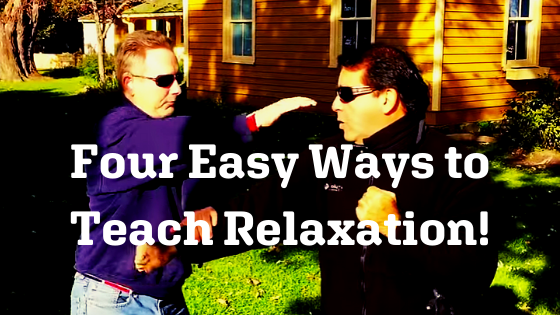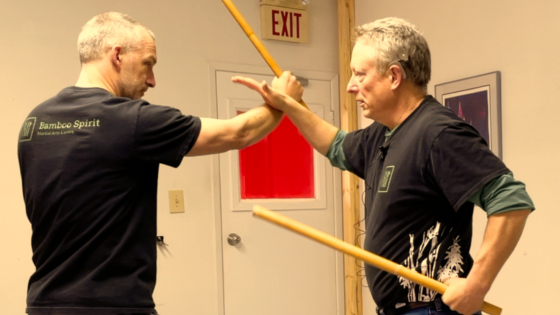Six Ways To Practice Your Cane Anyos
I’ll discuss six ways to practice your cane anyos in this post. Or is it just six?
Martial arts schools vary widely in the number of required forms, ranging from fewer than 5 to 30. Invariably, these schools have different philosophies concerning the practice of kata/forms. Some schools advocate that a large variety of kata is needed to practice as many moves as possible. Others lean in the direction of a lesser number of kata, emphasizing practicing the same movements repeatedly. They point out that the masters in 17th and 18th century Okinawa often practiced less than five kata over their lifetimes and that these katas comprised a complete self-defence system. I lean toward the “less is more” crowd and don’t see the point of learning so many forms.
Modern Arnis has four (4) cane anyos and eight (8) empty hand anyos.
For this post, I will focus on the four cane anyos. Below is a video of the late Master Bob Quinn demonstrating his version of the cane anyos of Modern Arnis. There are some differences between his version and the version practiced in the IMAF, but the differences are irrelevant for this article.
If you are not able to view the video, click here.
As Datu Kelly Worden points out in his Anyo DVDs (see my review here), the anyos contain a rich trove of concepts and functional self-defence techniques that can be extracted from them. He demonstrates several ways to practice the cane/baston anyos in his DVDs. In addition, I posted an article by Jesse Enkamp on “51 Awesome Ways to Practice Kata.”
Based on Datu Kelly’s DVDs, the article by Sensei Enkamp and my practice, here are six ways you can practice the four cane anyos of Modern Arnis.
(1) Single cane;
(2) Double cane;
(3) Espada y daga;
(4) Knife;
(5) Double knife;
(6) Empty-handed.
As one can see from the above list, the cane anyos are incredibly adaptable and versatile. You need not necessarily be bound by a “prescribed” way of doing the cane anyos. I think that it’s fair to say that the Professor was not dogmatic and wanted his beloved art to be adaptable and to be able to flow in any given circumstance. I remember him telling us at a Michigan camp how important the anyos were to him and that it was an essential part of Modern Arnis.
Some might say, “What’s the point of practicing the anyos differently?” A simplistic answer might be, “Well, if you get bored, you can practice the anyos differently.” The better answer is, “If you practice the cane anyos in different ways, you’ll get to intimately know the movements of the anyos and make it part of your subconscious.” Practice them until the movements become natural and done without thinking.
And how about practicing the above cane anyos left-handed?
Then you’ve doubled the number of ways to practice the cane anyos! I practice my cane anyos left-handed regularly and highly recommend Modern Arnis players do so. If you do left-hand tapi tapi, you might as well do left-hand cane anyos. Again, “What’s the point?” Professor Presas advocated training both sides. While he was a natural lefty, his right-side cane techniques were phenomenal and likely better than 99% of the arnis players. Thus, it makes sense to develop both sides of the body. Practicing cane anyos left-handed is an excellent opportunity to develop the left hand.
As Sensei Enkamp clarifies, there are several ways to practice kata or anyos.
Based on his suggestions, you can expand how to practice the cane anyos from twelve to unimaginable variations. Given the number of ways you can practice kata or anyo, does it make sense to memorize or know 25 to 30 kata?
I don’t believe so. If I can practice the four cane anyos twelve (12) ways or more, I can get to know the anyos. You can get into it deeply and know the anyo inside and out.
I recently came across an interview with Tsutomu Ohshima, a direct student of Gichin Funakoshi, the founder of Karate. Part of the interview touched upon the issue of kata, and Ohshima said the following:
“They’d think that the guy who knows 30 kata is more an expert than the one that knows 25. I realized that the general public asks this kind of question – their mentality is variety, different kinds, the actual number. For the martial artist, it has to be completely opposite. We have to simplify, simplify, simplify. If you know 20, you have to make 10 kata better. If you know 10, you’ve got to cut to five, five kata that are really, really good. Even five kata are too many. Cut it to two. Each one performed 50,000 times. Do them 100,000 times, you realize that one kata is a little better than the other. Do the one that is better 50,000 more times. When you reach 150,000 or 200,000 times, then I think that kata is yours.“
While I may not agree with Ohshima on reducing the kata repertoire to one, I generally agree with him on the need to simplify the number of kata/anyo you practice. I can only guess why Professor Presas settled only on four cane anyos, but I bet he felt that four cane anyos were sufficient and contained all the information you needed. You have to practice and find the applications. I also agree with Ohshima’s emphasis on multiple repetitions. It’s the only way to get deep into a topic.
For the record, I practice the cane anyos the standard way, both right and left, far more than any other variation.
However, I plan to expand how I practice them as I want to know them.
Caveat: Don’t get caught up in the number of ways that you can practice a kata. “I can do this form in 3,000 different ways.” Really? Is that necessary? No. Pick a few variations you like, stick with them, and do them repeatedly.
Over to you readers, what is your kata/form philosophy? Do you practice your kata/forms/anyos in various ways? Let’s hear about your variations!
Additional Reading
- Review of Datu Kelly Worden DVDs
- 7 Great Ways to Train Left Handed
- The Redonda Drill
- Mixing It Up!
- The Stances of Modern Arnis Anyos
Share this post:
- Click to share on Twitter (Opens in new window)
- Click to share on Facebook (Opens in new window)
- Click to share on LinkedIn (Opens in new window)
- Click to share on WhatsApp (Opens in new window)
- Click to share on Nextdoor (Opens in new window)
- Click to share on Pinterest (Opens in new window)
- Click to email a link to a friend (Opens in new window)
Brian Johns
Related Posts
5 Comments
Leave a Reply Cancel reply
Categories
- Arnis/Kali/Eskrima (113)
- Book Review (8)
- DVD Reviews (3)
- Guest Post (4)
- Inspiration (24)
- Martial Arts (99)
- My story (92)
- Safety (14)
- Tips & tricks (6)
- Uncategorized (3)
- YouTube Videos (8)






[…] As an illustration, I’ll run through all of the Modern Arnis cane and empty hand anyos. The cane forms, in particular, can be performed in so many different ways. Single cane, knife, double cane, Espada y Daga, empty-handed, sibat, double blade, machete, and so […]
[…] Gumroad, and others have many martial arts-related videos that one can peruse for hours. Even blogs are packed with […]
[…] Gumroad, and others have many martial arts-related videos that one can peruse for hours. Even blogs are packed with information! For example, I once wrote a post on Archie Moore’s famous […]
[…] project I have undertaken lately involves my practice of the Modern Arnis Empty Hand Anyos. Like most martial arts, we perform our anyos in a more or less standard way. While […]
[…] Six Ways To Practice Your Cane Anyos […]